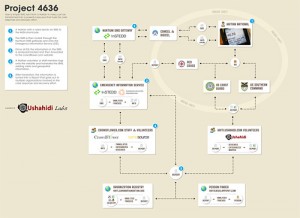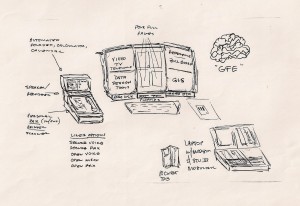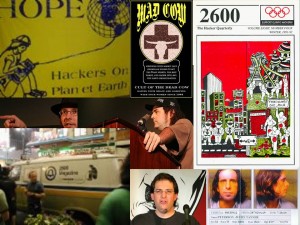
Project 4636 Revisited: The Updated Info Graphic
UPDATE: Since this graphic was published, a few additional clarifications have come to light. Please see Robert’s comment for more details.
Shortly after we posted the original Project 4636 info graphic, a few folks involved in the project got in touch to see if we could clarify the process. There are a lot of moving parts, many of which are constantly changing, and so the original graphic didn’t quite reflect the exact process as well as it could have. With that in mind, we worked with Josh Nesbit of Frontline SMS Medic and Nicolás di Tada of InSTEDD to make sure the graphic reflected the process as accurately as possible. The biggest update that we made is that InSTEDD’s Nuntium SMS Gateway and the Thomson Reuters Foundation Emergency Information System are now the first entities that receive and process incoming SMS’s. Everything else is pretty much the same.



 The software chapter in
The software chapter in
 HACKERS ON PLANET EARTH (HOPE)
HACKERS ON PLANET EARTH (HOPE) Phi Beta Iota: Hackers are like astronauts, pushing the bleeding edge of the envelope. If the US Government had listened to us in 1991-1994, cyberspace would be secure today, and we would not be spending $12 billion a year on the cyber-scam game–outsourcing to beltway bandits fighting for the 100 folks that actually know how to do this stuff and can qualify for clearances. Our solution for the regional networks is gong to be multinational and open everything. This event is specifically recommended for young teens who show signs of intelligence and curiosity, and for mid-career officers beginning to realize that 80% of what they do is without merit, seeking a better way. This is where we do the right things righter, not the wrong things righter.
Phi Beta Iota: Hackers are like astronauts, pushing the bleeding edge of the envelope. If the US Government had listened to us in 1991-1994, cyberspace would be secure today, and we would not be spending $12 billion a year on the cyber-scam game–outsourcing to beltway bandits fighting for the 100 folks that actually know how to do this stuff and can qualify for clearances. Our solution for the regional networks is gong to be multinational and open everything. This event is specifically recommended for young teens who show signs of intelligence and curiosity, and for mid-career officers beginning to realize that 80% of what they do is without merit, seeking a better way. This is where we do the right things righter, not the wrong things righter.

